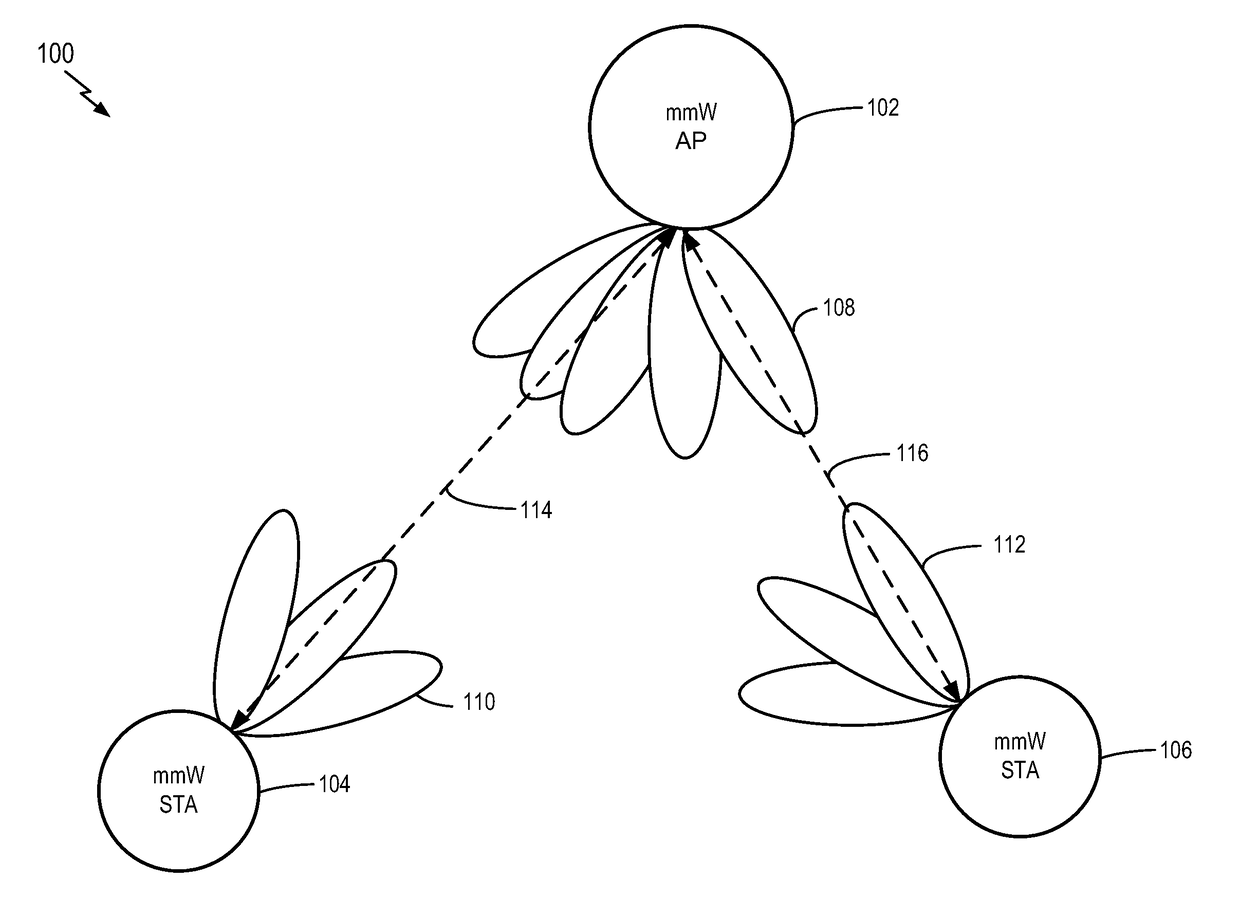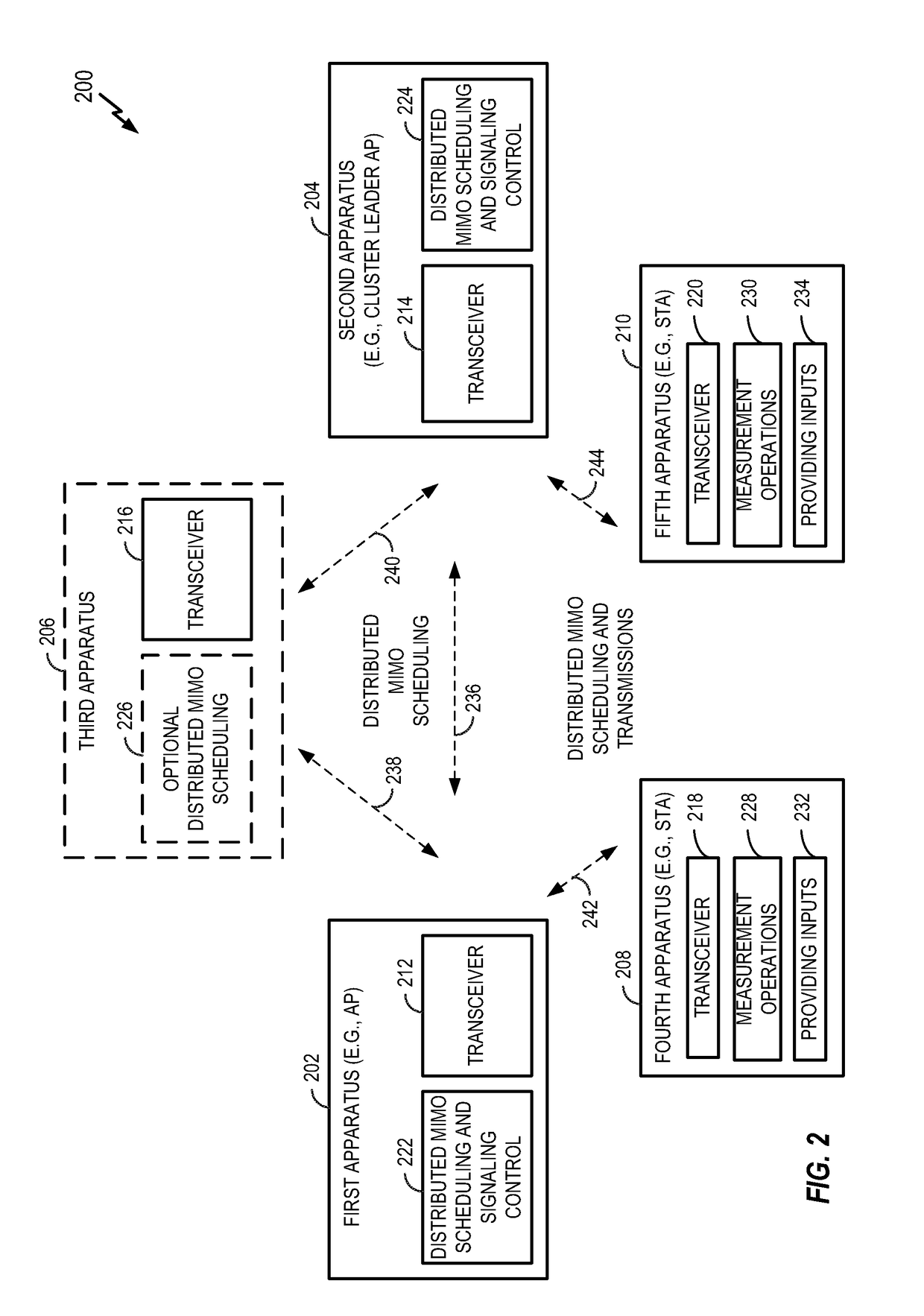Distributed MIMO communication scheduling in an access point cluster
a clustering and access point technology, applied in the field of wireless communication, can solve problems such as interfering with the communication of another device on the same communication resour
- Summary
- Abstract
- Description
- Claims
- Application Information
AI Technical Summary
Benefits of technology
Problems solved by technology
Method used
Image
Examples
example communication
Device
[0422]FIG. 49 illustrates an example apparatus 4900 (e.g., an AP, an AT, or some other type of wireless communication node) according to certain aspects of the disclosure. The apparatus 4900 includes an apparatus 4902 (e.g., an integrated circuit) and, optionally, at least one other component 4908. In some aspects, the apparatus 4902 may be configured to operate in a wireless communication node (e.g., an AP or an AT) and to perform one or more of the operations described herein. For convenience, a wireless communication node may be referred to herein as a wireless node. In different scenarios, a wireless node may be an AP, a STA, a central scheduler, or some other type of communication node. The apparatus 4902 includes a processing system 4904, and a memory 4906 coupled to the processing system 4904. Example implementations of the processing system 4904 are provided herein. In some aspects, the processing system 4904 and the memory 4906 of FIG. 49 may correspond to the process...
example processes
[0426]FIG. 50 illustrates an example process 5000 for communication in accordance with some aspects of the disclosure. The process 5000 may take place within a processing system (e.g., the processing system 4904 of FIG. 49), which may be located in an AP, a STA, or some other suitable apparatus. Of course, in various aspects within the scope of the disclosure, the process 5000 may be implemented by any suitable apparatus capable of supporting communication-related operations.
[0427]At block 5002, an apparatus (e.g., an AP or some other node) obtains signal measurement information indicative of channel conditions between a plurality of first wireless nodes (e.g., APs) and a plurality of second wireless nodes (e.g., STAs). In some aspects, the plurality of first wireless nodes may include at least part of a cluster of wireless nodes configured to collectively serve the plurality of second wireless nodes. In some aspects, the cluster may include a coordinated beamforming cluster or a jo...
PUM
 Login to View More
Login to View More Abstract
Description
Claims
Application Information
 Login to View More
Login to View More - R&D
- Intellectual Property
- Life Sciences
- Materials
- Tech Scout
- Unparalleled Data Quality
- Higher Quality Content
- 60% Fewer Hallucinations
Browse by: Latest US Patents, China's latest patents, Technical Efficacy Thesaurus, Application Domain, Technology Topic, Popular Technical Reports.
© 2025 PatSnap. All rights reserved.Legal|Privacy policy|Modern Slavery Act Transparency Statement|Sitemap|About US| Contact US: help@patsnap.com



